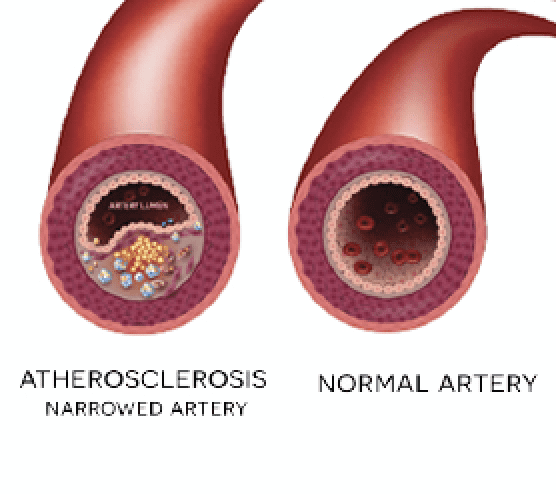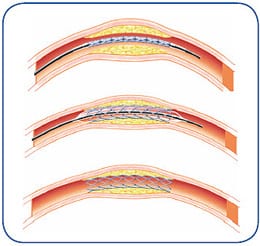
Virtual remote appointments are available. Contact us for a video telehealth evaluation.

All appointments conducted by our Board Certified doctor and not assistants or non-physician providers.
How Important is Choosing the Right Vascular Specialist?
You may have a vascular specialist. You may have been referred to a specialist or just had a consultation. This is what you need to know in choosing the right specialist before committing to any procedure. No two specialist are similar in skill, effort, technique or outcome. But most importantly, your referring doctor is unlikely to know who is best without actually having seen a surgical case performed, an unlikely scenario. You may have been referred out of habit.
Why is choosing the right specialist more important than ever? Because there are effective minimally invasive non-surgical treatments instead of invasive surgeries (discussed below). However, if your vascular specialist is unskilled, unsuccessful or has a complication then you will be referred to have bypass surgery or amputation. This can be life changing. You may be told that this is your only option. You may not know any better without seeking a second opinion. It is better to get it right from the start by choosing the right specialist. So how do you do that?
Vascular disease is treated by Interventional Radiologists, Vascular Surgeons and Cardiologists. These treatments require a high level of catheter and wire skill, decision making, and best practice to ensure success. To make sure that you have the best specialist here are the four questions you must ask:
- What is the rate of success and complication? If a specialist has done 1,000 procedures but had 200 complications and 100 failures, this isn't good. In fact, terrible. Our specialist has a 95% success rate with less than 1% complication rate.
- What is the experience? Choose a specialist that has a proven record of tackling difficult cases successfully. Some specialist choose to only do the simple procedures and refer the rest to surgery. Additionally, if the specialist can only perform simple procedures they may have a higher rate of complication if the case turns out to be more difficult than expected. Our specialist has performed numerous successful complex procedures from the groin, knee and foot. See our prior cases here.
- Is the specialist involved in continued learning to provide up-to date treatments? A lot of times specialist become content in what they are doing and no longer follow up on changes in technology and practice techniques providing substandard care. Our practice does not cut corners and provides our specialist with the best tools needed for success. Conference attendance also updates our practice to provide the best techniques. Read about our practice here.
- Does the specialist have the right motivations? The specialist should have your best interest in mind. If they are rushed with little time for effort they maybe more inclined to refer for surgery or alternate treatment. Read about our specialist here.
We are happy to evaluate your case and be your vascular specialist or provide you with a second opinion. Simply fill out the contact form at the bottom of this page.
Peripheral Arterial Disease
Peripheral Artery Disease (PAD) is a medical condition characterized by narrowing of the arteries in the legs, causing a reduction in circulation to  the toes, feet and legs. This can occur as a result of smoking, high cholesterol, diabetes or high blood pressure. The arteries can narrow or completely be blocked reducing the blood supply to the legs. The cramping symptoms are worse on exercising because the narrowed arteries cannot meet the muscles demand for oxygen. Left untreated, PAD can lead to amputation and put you or your loved one’s quality of life and long-term health at serious risk.
the toes, feet and legs. This can occur as a result of smoking, high cholesterol, diabetes or high blood pressure. The arteries can narrow or completely be blocked reducing the blood supply to the legs. The cramping symptoms are worse on exercising because the narrowed arteries cannot meet the muscles demand for oxygen. Left untreated, PAD can lead to amputation and put you or your loved one’s quality of life and long-term health at serious risk.
With an early diagnosis, you may have more treatment options and may have a better chance to reduce or eliminate your symptoms.
What are the symptoms of PVD?
Many people with PVD have no symptoms. If symptoms do occur, they can include:
- Pain in the muscles of the calves, thighs or hips that gets worse with activity
- Achy, tired, or heavy feeling in the legs
- Weakness, numbness, tingling, or loss of feeling in the legs
- Changes in skin color of the legs
- Sores on the legs and feet
- Cold leg, feet, or toes
- Pain the feet or toes even when lying down (rest pain)
Treatment Options
Your doctor may recommend lifestyle changes, such as eating healthier and exercising. A doctor may also prescribe medication to treat risk factors like high blood pressure, cholesterol or diabetes. After those options are tried, or if your condition is severe enough, your doctor or PAD specialist may recommend the below treatment options:
Non-Surgical Image-Guided Procedures
During these procedures: Sedation is given to help you relax. Next, a tiny tube is gently inserted in an artery, usually in the groin or upper thigh area. You will be given a local anesthetic to numb the area where the tube will be inserted. It is then guided through the blood vessel toward the disease artery. When it's in place, a dye is injected through the catheter to visualize the arteries. An X-ray is taken to help the physician pinpoint the area that is blocked or narrowed. The physician then uses tiny wires and catheters to get through the diseased vessels. Depending on the images treatment may then be performed.
Angioplasty — a special catheter that has a balloon on one end is advanced into the diseased artery. This is temporarily inserted through the narrowed artery and inflated to flatten the plaque against the artery wall, opening the artery and restoring blood flow.
Stent placement —a stent is a small, expandable,  mesh-like tube that supports the artery and helps to keep it open. Implanting a stent does not require open surgery. The doctor inserts a catheter into an artery in your arm or leg, similar to the balloon angioplasty procedure. A specially designed catheter delivers the stent to the narrow area in the artery. The stent is expanded, flattening the plaque against the artery wall and holding the artery open with a mesh tube. The catheter used to deliver the stent is then removed, but the stent stays in your artery permanently to maintain healthy blood flow.
mesh-like tube that supports the artery and helps to keep it open. Implanting a stent does not require open surgery. The doctor inserts a catheter into an artery in your arm or leg, similar to the balloon angioplasty procedure. A specially designed catheter delivers the stent to the narrow area in the artery. The stent is expanded, flattening the plaque against the artery wall and holding the artery open with a mesh tube. The catheter used to deliver the stent is then removed, but the stent stays in your artery permanently to maintain healthy blood flow.
Atherectomy — a specialized catheter that modifies the plaque in the arteries. Unlike angioplasty and stenting, which are designed to move plaque to the sides, atherectomy involves cutting and removing or sanding down the plaque from the artery, restoring normal blood flow.
Surgical Options:
Surgical endarterectomy — During this procedure, a doctor makes a small incision (cut) along the blocked or narrowed artery and physically removes the plaque. In some cases, the blocked portion of the blood vessel is also removed. After the plaque has been removed, the artery is closed with stitches or by a patch made from your own vein or synthetic material.
Bypass surgery — This procedure uses a graft – either a healthy blood vessel from another part of the body, or a synthetic tube – to reroute the blood flow around a blocked artery and create a new, permanent pathway for blood to flow. The procedure is done in a hospital under general anesthesia. The doctor makes a small opening near the blockage in the diseased artery. The graft is then attached (grafted) above and below the blockage, creating a new passageway for blood to flow (bypass) around the blocked artery.
Advantages of Image-Guided Procedures
- Less invasive
- Quick recovery
- Lower risk
- Lower cost when compared to surgery, such as bypass
- Does not require general anesthesia
- Outpatient so you go home the same day
- No stitches or major incision
Our Vascular and Interventional Radiologist will devise an individualized treatment plan designed to minimize pain, cure sores, avoid amputation, and improve the overall quality of life for our patients. It is our goal to stay on top of all disease progression to keep you on your feet. Patient care does not end after a procedure. Follow-up appointments are scheduled to evaluate recovery and results, and personable staff members and physicians will be available to help with questions or concerns after every procedure, diagnostic test, and appointment. We are dedicated to giving each patient the best possible experience and results.
Why Our Specialist?
Superior catheter and wire skills is essential in a delicate procedure such as treating blocked arteries. We treat a number of patients that have had failures by other specialists. Our doctor is an image-guided specialist having performed over 5,000 procedures with successful experience in venous and arterial blockages. Having a wide array of experience in different image-guided procedures brings a unique skill set to ensure that you have the most successful outcome without complication. Rest assured that our specialist can not only complete simple procedures like other centers, but he has a consistent history of successfully treating complex cases.
We have a high success rate at CVI not only because our physician is expertly skilled but also because we provide the physician with the best tools needed to open the blocked vessels. The choice of wires and catheters that are placed through the vasculature are essential to provide the best chance at success. Unlike other clinics you can rest assured that at CVI we do not cut corners and only purchase the best and highest quality tools that our specialist requires.
The above information explains what is involved and the possible risks. It is not meant to be a substitute for informed discussion between you and your doctor, but can act as a starting point for such a discussion.
